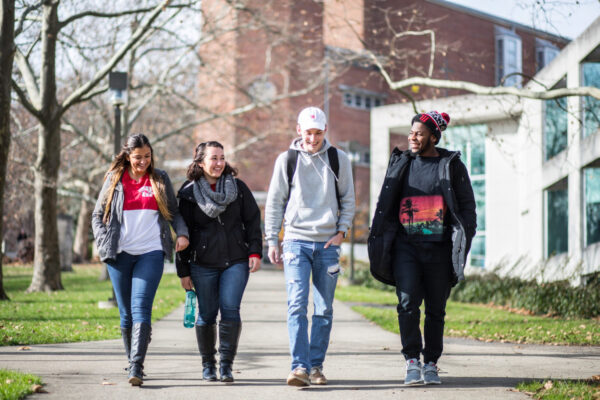By Ruth M. López and Vincent D. Carales
In the fall of 2017, Hurricane Harvey struck the Gulf Coast, significantly affecting 13 million people in states throughout the region. Now COVID-19 is wreaking havoc across the world, impacting hundreds of millions of people and their families.
In the wake of the hurricane, we conducted a study to understand how community college students in the Houston area were impacted by the hurricane. The findings of that study provide insight on how to support college students during the COVID-19 crisis as institutions modify how they provide their classes and services. We offer the following takeaways from our study[i] to higher education administrators, staff, and faculty who are working to support students during this time of uncertainty.
Provide resources, but be aware of barriers
After the hurricane, students in our study indicated that they benefited from immediate institutional support and resources, such as food and transportation vouchers and emergency funds. While they felt their colleges’ communication efforts about services were far-reaching, some students felt overwhelmed by the impact of the storm and were reluctant to seek assistance. Students said that a streamlined services request process would have been beneficial so they wouldn’t be overburdened with too many steps and paperwork.
During the COVID-19 crisis, we recommend that institutions make the process of applying for and receiving resources as easy and streamlined as possible. In the current pandemic, many institutions are providing additional support to students, and requests for assistance are being processed online due to the threat of illness. However, it is important to note that while some students will not apply for resources or contact the institution, this lack of contact does not mean the need is not there. The reality is that students may be overwhelmed due to many factors, such as caring for children or younger siblings, dealing with the loss of employment, or even illness.
Two helpful practices we observed at our study site were a hotline where students could leave messages and an online survey where students could share their needs. Someone at the institution responded to every voicemail and survey result with questions or concerns. To increase access to support, these types of communication efforts should continue even after the COVID-19 crisis passes. All staff and faculty should be made aware of the resources that exist for students to ensure that the information gets to students in multiple ways.
Practice vulnerability and acknowledge the shared trauma
We initially set out to interview students who were directly impacted by the storm—students whose homes or cars flooded, or who had to evacuate. What we quickly realized was that everyone in the Gulf Coast region was impacted by the storm to some degree—even ourselves. We came to this realization during our interviews when several times students asked us, “how are you doing? How did the hurricane affect you?”
Hurricane Harvey was a shared experience, and now the current global public health crisis is as well. There will be varying levels of impact, but to a degree all of our lives are forever changed.
Now that we are advising and mentoring students during the current crisis, they often ask how we are dealing with the pandemic. We learned through our study that vulnerability from faculty and staff helped students feel more connected to us. So now when students ask us, we try to answer with honesty when we feel comfortable doing so. We inform them about our lives, such as working with children at home, worrying about our aging parents with underlying health conditions, feeling concern about families and friends who are essential employees, and dealing with other fears or stress brought on by this moment. Faculty, staff, and administrators demonstrate authenticity and develop trust with students when they are willing to share their own experiences.
Use (virtual) classrooms as spaces to process the experience
We found that students felt a sense of community when they were given a chance during class to share how they were impacted by Hurricane Harvey. Students saw these opportunities as a part of a healing process and bonded with classmates in meaningful ways. One student shared that his math professor did “a good thing . . . with that little group discussion and we all came together and man we all got through it.” Other students mentioned how professors were “lenient” and “understanding” in the semester after Harvey.
When faculty provide a space for students to process, it demonstrates that they truly care about their students’ well-being. We recommend that faculty set aside time during class to allow students to reflect on their current experiences prior to continuing their course plans. The benefits to our students’ well-being are worth taking the time to slow down.
In our current courses, we took more time to check in during the first week of the transition to online instruction. In the subsequent weeks, these check-ins take less time, and we do them as sort of “temperature checks.” This engagement with students also creates opportunities for students, faculty, and staff to discuss ideas and solutions that they have found helpful. For example, in a recent Zoom check-in with students, we asked students to share joys and their self-care routines.
Check-ins can also be done through a short online questionnaire, particularly if courses are asynchronous or to allow for students to share confidentially when they do not feel comfortable sharing in class.
Be prepared to provide long-term support after the crisis
We conducted our study nine months after the storm, but major challenges still remained for students. Several students had just moved back into long-term housing but lacked furniture, some were still displaced, and many were still recovering economically. One student described the invisibility of their need for continued support as things in the Houston area seemed to return to normal and students returned to school.
When we return to our institutions after this global health crisis, we must recognize that students will need support long after the social distancing and stay-at-home orders have passed. Some of this support may be academic, but it could also be around mental health and other health needs. Students may need additional financial support so they can continue to stay enrolled and complete their degrees.
Some institutions have already responded with support for students by giving the option of pass/fail courses. Other institutions have assisted faculty by giving them the option to pause their tenure clocks. Campus leaders should anticipate the long-term needs of students, faculty, and staff members and develop proactive processes to be prepared when ongoing and continued support is needed.
Hurricane Harvey was a much different scenario than the current COVID-19 crisis, which is affecting higher education in ways that are difficult to anticipate. The higher education community of institutions, leaders, faculty, staff, and students have come together during this uncertain time to support the needs of their communities. It is our hope that we can continue honoring what matters most in times like this—our collective well-being.
[i] This study is currently under review for publication consideration. A version of this manuscript was presented at the Association for the Study of Higher Education 2019 Annual Conference. Please contact the authors if you would like to obtain a copy for citation permissions.
If you have any questions or comments about this blog post, please contact us.


